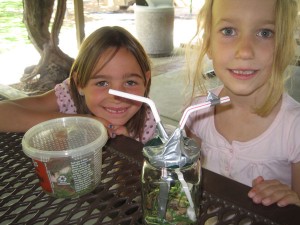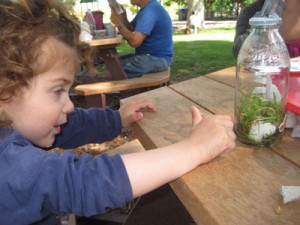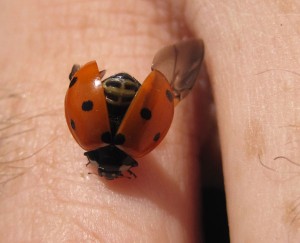Parents manned their stations leading the kids on a [...]]]>
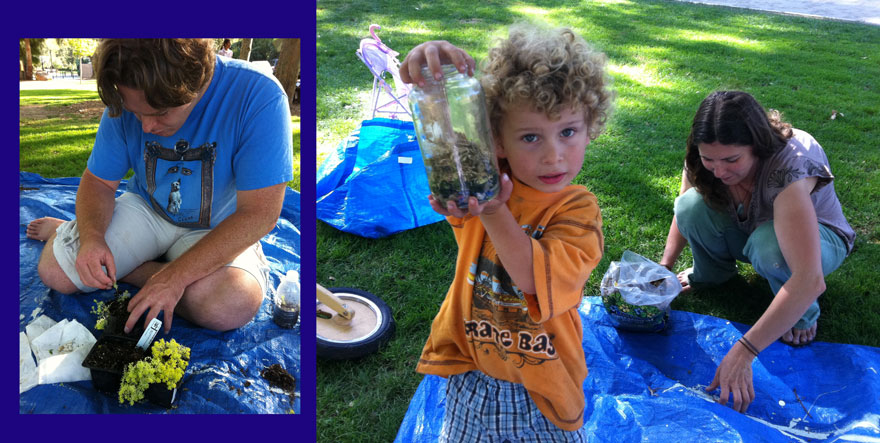 Take the MudPies & Butterflies Nature Pledge Today.
Take the MudPies & Butterflies Nature Pledge Today.
1. Respect All Living Things
2. Observe (Nature)
3. Protect the Earth you Play upon
In order to protect the living things in your neighborhood, backyard or park, we must find out what they are.
 Parents manned their stations leading the kids on a nature scavenger hunt where they recorded what they saw in their sketchbooks. We all observed what we saw in the grass, in the trees, dirt and sky. Magnifying glasses only add to the fun! At MudPies & Butterflies EVERYONE is a scientist and/or a naturalist. On this day, they were Nature detectives
Parents manned their stations leading the kids on a nature scavenger hunt where they recorded what they saw in their sketchbooks. We all observed what we saw in the grass, in the trees, dirt and sky. Magnifying glasses only add to the fun! At MudPies & Butterflies EVERYONE is a scientist and/or a naturalist. On this day, they were Nature detectives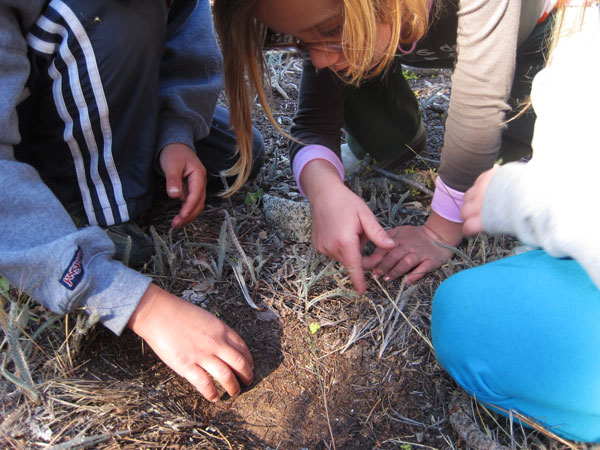 who drew and counted the wildlife and plantlife around them. By recording what you witness outdoors in a Nature Journal it will make a visit or camping trip even more memorable. In order to Care for Nature, we have to NOTICE it.
who drew and counted the wildlife and plantlife around them. By recording what you witness outdoors in a Nature Journal it will make a visit or camping trip even more memorable. In order to Care for Nature, we have to NOTICE it.
This week, I invite you to take a second look in your backyard. Find the smallest animal (insect) and the biggest. Find the plant or tree with the greatest variety of colors or shades. Take a walk in your neighborhood and LISTEN for nature. Even concrete neighborhoods harbor animal and plant life. If you look for unique animal and plant life, YOU will find them!


When you take time to sketch Nature, you notice the coolest things you missed!
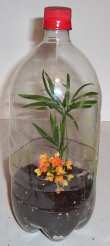 What the heck is a BIOME anyway?
What the heck is a BIOME anyway?


When you take time to sketch Nature, you notice the coolest things you missed!
 What the heck is a BIOME anyway?
What the heck is a BIOME anyway?A biome is large area where the plants and animals have adapted in their own unique ways to the water, heat & soil specific to that area, like a rainforest, desert, or prairie. We will discuss Biomes, Habitats & Ecosystems. And Everyone will make a miniature-biome - a small handmade terrarium that will fit in your home (don’t forget your bottle) -It takes a little more care to create, but you can make one out of a glass bottle if your family avoids using plastics.
In order to make our Mini-Biome, I supplied organic dirt, some seeds & seedlings, activated charcoal, pebbles and moss to layer our terrariums with built in filters. I am a big believer that in bringing nature indoors to more closely observe what happens will only increase the awareness and conservation outdoors.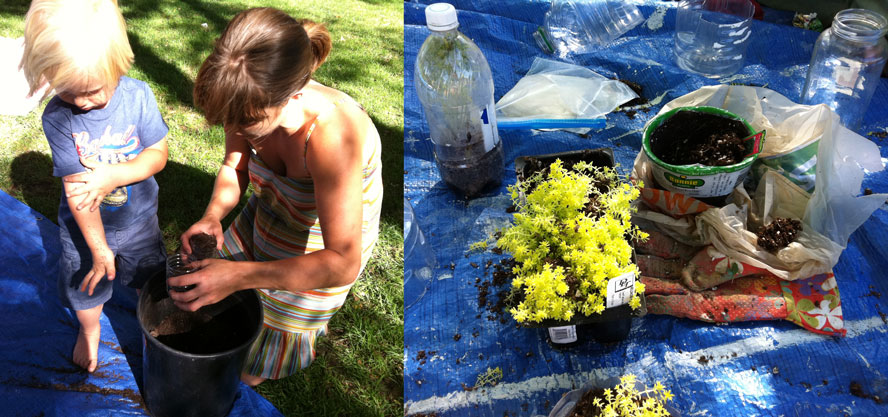

Three Biomes: Rainforest Canopy, Desert Life & Swamp

Three Biomes: Rainforest Canopy, Desert Life & Swamp
Take the Biome Challenge with your family to see how well you know your surroundings.
• Identify four fruits and/or vegetables that are in season now (prepare them this week!)
• Identify the closest body of water to you.
• Name your state flower or bird.
• Name the geological conditions that define the land in your area, such as bodies of water or valleys, etc.
• How often does the weather in your region affect your activities?
• What are the natural signs of the change of seasons in your area? What do you like best and least about each one?
• When did you last encounter wildlife in your neighborhood?
-
- Three Biomes: Rainforest Canopy, Desert Life & Swamp
]]>
- Three Biomes: Rainforest Canopy, Desert Life & Swamp
No matter how briefly you contain bugs, ALWAYS include a moistened cottonball. Like humans they will die with out water.
What Is an Insect?
Insects come in a wide variety of sizes, shapes, and colors. Regardless of their differences, all insects have the following four characteristics:
Bees & Wasps [...]]]>

No matter how briefly you contain bugs, ALWAYS include a moistened cottonball. Like humans they will die with out water.
What Is an Insect?
Insects come in a wide variety of sizes, shapes, and colors. Regardless of their differences, all insects have the following four characteristics:
Bees & Wasps are indeed Insects
1. All insects have – Three body parts—Head, Abdomen, and Thorax.
The thorax is behind the head and is the attachment point for the legs and wings. The abdomen is behind the thorax and is used for digestion and reproduction. This is where protective “gear” like stingers are found.
2. All insects have an exoskeleton that acts as a suit of armor to protect them
3. All insects have Six legs with joints
4. And finally, all insects have Two antennae
Many people mistake spiders, worms, and centipedes for insects. But, because they do not have the required four characteristics, 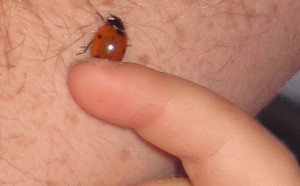 they are not insects. Spiders, for example, have eight legs, while worms don’t have any.
they are not insects. Spiders, for example, have eight legs, while worms don’t have any.
Is a ladybug an insect? Yes
Is a ladybug a beetle? YES.
Beetles exhibit bilateral symmetry.
Do you know how many Spots a ladybug can have?
Go here to find the answer and see for yourself.
Ladybug Life Cycle –
Just like all beetles, ladybugs go through different stages of life. Young ladybugs actually don’t look anything like the pretty red and black adult ladybugs we are all used to seeing. If you saw one that wasn’t an adult yet, you might not even recognize it. The stages that ladybugs go through are all steps in a very complex process called metamorphosis. (Butterflies, moths and amphibians like frogs go through metamorphosis too!)
All photos are from our Park. The children found ladybugs in all four stages of their life cycle. What great Nature investigators we have!!!
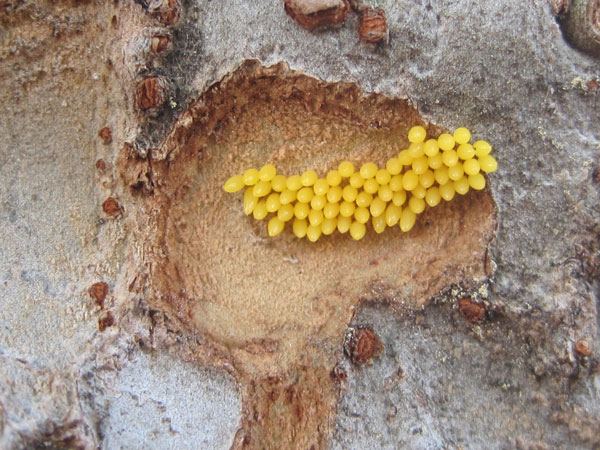
Eggs layed on bark of tree
Stage 1: Egg
A female ladybug lays a cluster of tiny yellow eggs. After about one week, the eggs will hatch and small odd-looking creatures appear! Eggs are usually layed on edible leaves.
Stage 2: Larva
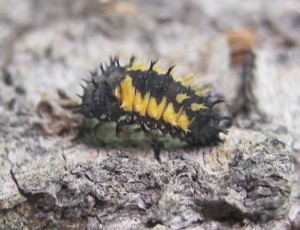
Larva Stage of the Ladybug
The odd-looking creatures that hatch out of the eggs are called larva (plural is larvae). They have long bodies with six legs and are mostly black with some color. They look like mini – Monsters. The ladybug will live as a larva for 2-4 weeks of its life. In this time, Ladybug larva can eat up to 400 aphids! When the larva has grown as much as it needs to, it attaches itself to a leaf, tree or wall in our case, to get ready for its next stage of life.
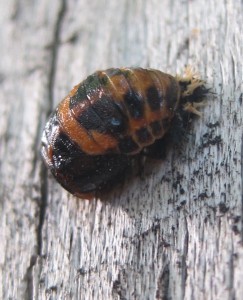 Stage 3: Pupa
Stage 3: Pupa
The Pupa form which is similar to a butterfly’s chrysalis, will remain attached to one surface for 5 days while it changes into an adult. The pupa does not eat or move because it stored up plenty of food in its body while it was a larva.
Stage 4: Adult
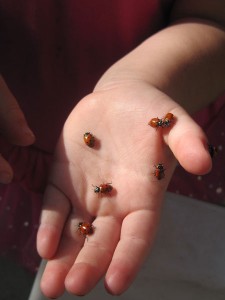
I released 1,500 ladybugs for the kids to catch purchased at a local gardening store as organic pest control.
When ready, the fully formed ladybug as we know it backs out and leaves the pupa shell behind. It now has two sets of wings. One set of wings is the hard brightly-colored part that helps us recognize ladybugs. This hard set of wings is called the elytra (say: EL-LIE-TRA) and it protects the fragile flying wings underneath. When the pupa hatches as a new adult ladybug, it doesn’t have any spots yet and its elytra are wet, soft, and pale colored. They will dry out during the ladybug’s first day as
an adult and it will soon be a pretty bright color with spots! Ladybugs can actually be red, orange, or yellow! Scientists have counted over 5,000 different kinds of ladybugs in the world!
As an adult, the new ladybugs can eat up to 75 aphids a day. Towards the end of the summer, ladybugs like to eat pollen and some types of plants so that they can store up fat for the winter. During the winter, ladybugs hibernate. To stay warm, they usually huddle together in groups and bury themselves under piles of leaves, grasses, or rocks for protection from winter weather. When spring arrives, the ladybugs will begin to wake up and come out looking for a tasty meal of aphids! They will begin to lay eggs that will grow into more ladybugs.
Time to Catch some insects at the Park!
Do you know that it is rather easy to injure an insect? You could accidentally break off an antennae, a leg or possibly harm their wings, any of which prevent them from protecting themselves from predators. One the best ways to catch an insect (at least one smaller than the opening of a straw) is with a bug catcher. They can cost anywhere from $9-$80. or you can just build your own. I recommend the glass jar sort with straws and a bit of loosely woven cloth. This is what we made. Or if you want to go with plastic cups and lids, here’s your best bet.
On this day, we made our own Bug 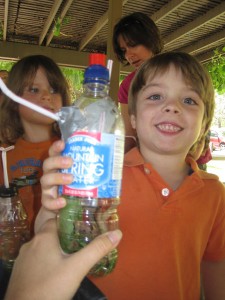
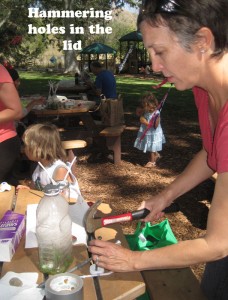 Catchers and caught many different types of bugs
Catchers and caught many different types of bugs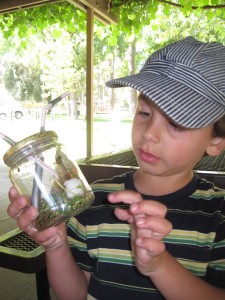 by safely (to us and them) sucking them into our bug catchers. The only modification we made to our homemade catchers was to add a bright piece of paper or tape to the straw that had the gauze on it. This meant it was the SAFE straw to suck upon and with the gauze we would not accidentally inhale a bug that had previously been captured in our container.
by safely (to us and them) sucking them into our bug catchers. The only modification we made to our homemade catchers was to add a bright piece of paper or tape to the straw that had the gauze on it. This meant it was the SAFE straw to suck upon and with the gauze we would not accidentally inhale a bug that had previously been captured in our container.

Whenever you capture an insect, always include a cottonball that you have liberally moistened. Most insects can easily go with out food for a day or two, but rarely can they go with out water.
For More Ladybug Fun and Insect Investigations go to this great homeschooling site.
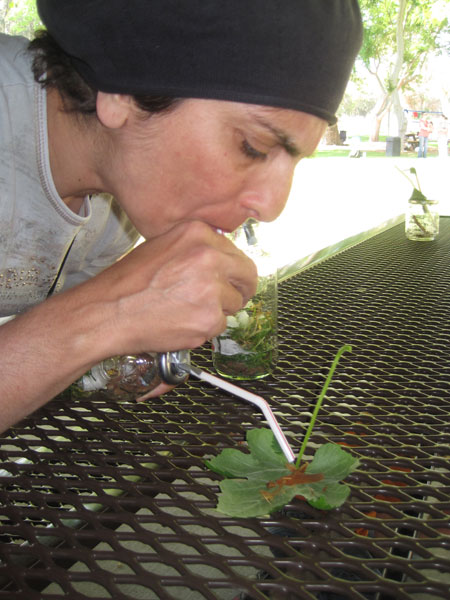
A bug Catcher in Action! Love it D!!!
